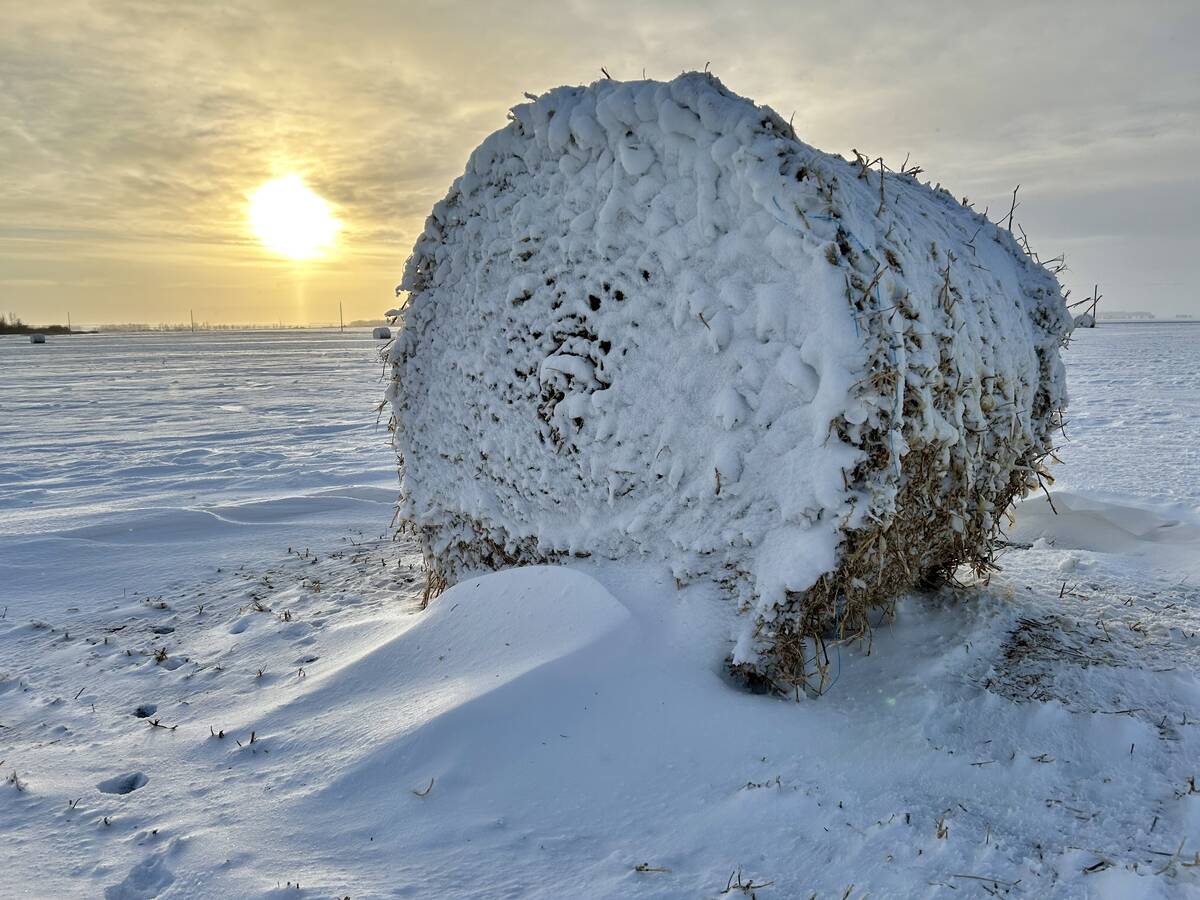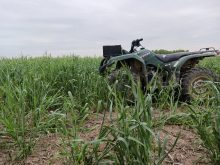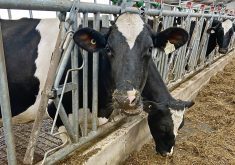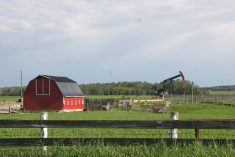Nitrogen and phosphorus loss in snowmelt run-off from in-field cattle overwintering can be an environmental concern, says a researcher from the University of Saskatchewan.
Wintering cattle directly in the field creates concerns with increased nutrients being deposited where they may be susceptible to movement with snowmelt run-off, Jeff Schoenau told the Manure Management Update conference in Lethbridge.
Nutrients in urine and fecal material influence the nutrient content in soil, run-off water, and ground water. Research has found nitrate-N concentrations in snowmelt run-off water were similar in the control and winter-fed areas, said Schoenau.
Read Also

Prairie winter snowfall forecast 2025-2026
How much snow should farmers in Alberta and elsewhere on the Canadian Prairies expect for the rest of December 2025 and into January-February 2026?
“This is explained by lack of sufficient time and temperature for organic N, urea and ammonium in the urine and fecal matter to convert to nitrate,” he said.
The study found orthophosphate- P and ammonium-N concentrations were significantly elevated in run-off from the winter feed treatment basins compared to the controls, he said.
“Caution should be used when utilizing an in-field winter feeding system and selecting appropriate sites so the run-off water does not reach sensitive water bodies,” he said.
Schoenau said the in-field system can reduce yardage and manure hauling costs, but the system was been shown to increase retention and recycling of nutrients contained in feed, as the nutrients are applied directly to the field instead of being lost in the pen before being transferred to the field.
More phosphate
The objective of the study is to determine the effect of cattle in-field winter feeding system on the nutrients in snowmelt run-off water. Surface and subsurface water samples were collected from catchment basins in paired winter feeding versus control watershed basins in a pasture field. The water samples were analyzed for forms and concentrations of nitrogen and phosphorus.
Schoenau said the results indicate concentrations of orthophosphate-P collected in the snowmelt run-off water from the in-field overwintering sites were significantly elevated compared to water from the control watersheds. Ammonium-N in run-off water was also significantly elevated compared to the control water. There was no significant difference in nitrate- N concentrations in water from the overwintering sites versus the control.
The lack of effect on nitrate is attributed to dominance of organic N and ammonium in dung and urine deposited, with cold temperatures limiting conversion of ammonium to nitrate. Piezometer well samples also showed some elevation of ammonium- N and orthophosphate-P in the overwintering sites that may have originated from the catchment basins.
Elevation of orthophosphate-P and ammonium-N concentrations in snowmelt run-off water from winter feeding sites indicates that these sites should be located to avoid run-off water entering into sensitive surface and subsurface water bodies, he said.
Similar nitrate-N concentrations in snowmelt run-off water from control and winter feeding sites in the first year of establishment may be explained by cool temperatures limiting microbial conversion of ammonium to nitrate. Lower water-soluble soil phosphate in spring compared to fall is attributed to rapid plant and microbial uptake of phosphate in spring as the soil warmed and the pasture began early-season growth.
———
“Cautionshouldbeusedwhenutilizinganin-fieldwinterfeedingsystemandselectingappropriatesitessotherun-offwaterdoesnotreachsensitivewaterbodies.”
JEFF SCHOENAU














